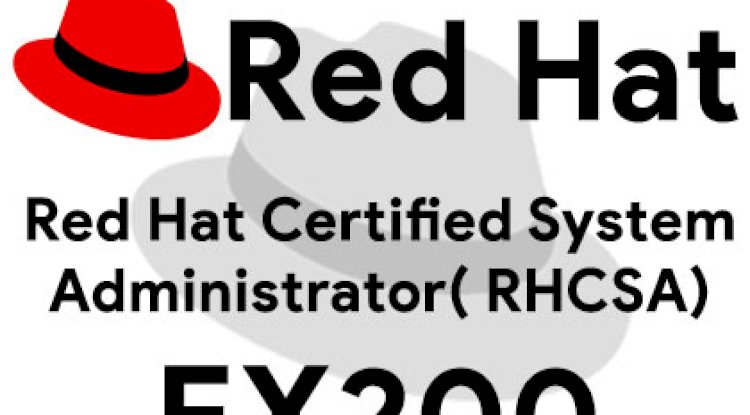Cyber Threat Intelligence Analyst | Understanding and Preventing Future Attacks
A Cyber Threat Intelligence Analyst plays a critical role in cybersecurity by collecting, analyzing, and interpreting threat intelligence to anticipate and mitigate cyberattacks. Their work involves monitoring cybercriminal activities, analyzing malware, tracking security vulnerabilities, and providing actionable intelligence to organizations. In this blog, we explore the roles and responsibilities of a Cyber Threat Intelligence Analyst, key skills required, popular threat intelligence tools, and best practices for preventing cyber threats. We also discuss how threat intelligence helps identify attack patterns, monitor the dark web, and improve an organization’s overall security posture. If you're looking to pursue a career in threat intelligence, this guide will provide valuable insights into what it takes to become a Cyber Threat Intelligence Analyst and how they contribute to proactive cybersecurity defense.
Table of Contents
- Introduction
- Who is a Cyber Threat Intelligence Analyst?
- Roles and Responsibilities of a Cyber Threat Intelligence Analyst
- Types of Cyber Threat Intelligence
- Key Skills Required for a Cyber Threat Intelligence Analyst
- Popular Threat Intelligence Tools
- Best Practices for Preventing Cyber Threats
- Conclusion
- FAQs
Introduction
With the rise of sophisticated cyber threats, organizations are investing heavily in Cyber Threat Intelligence (CTI) to protect their digital assets. A Cyber Threat Intelligence Analyst plays a crucial role in gathering, analyzing, and interpreting threat intelligence to anticipate and mitigate future cyberattacks.
Cyber Threat Intelligence Analysts use data from multiple sources to uncover cybercriminal tactics, techniques, and procedures (TTPs). Their work helps organizations strengthen defenses, prevent data breaches, and proactively counter cyber threats before they cause harm.
This blog explores the role of a Cyber Threat Intelligence Analyst, their responsibilities, skills, tools, and best practices for preventing cyberattacks.
Who is a Cyber Threat Intelligence Analyst?
A Cyber Threat Intelligence Analyst is a cybersecurity expert who analyzes cyber threats, investigates attack patterns, and provides actionable intelligence to prevent future attacks.
Unlike SOC Analysts, who focus on real-time security monitoring, Threat Intelligence Analysts work on strategic and tactical intelligence to predict and prevent attacks before they happen.
They use threat intelligence platforms (TIPs), machine learning, and OSINT (Open-Source Intelligence) to track cybercriminal activities, identify vulnerabilities, and recommend security measures.
Roles and Responsibilities of a Cyber Threat Intelligence Analyst
The primary role of a Cyber Threat Intelligence Analyst is to proactively identify and mitigate cyber threats. Their key responsibilities include:
1. Collecting Threat Intelligence
-
Gathering intelligence from open-source data, dark web forums, cyber threat reports, and security feeds.
-
Monitoring hacker communities for discussions on vulnerabilities and attack techniques.
2. Analyzing Cyber Threats
-
Identifying patterns and trends in cyberattacks to predict future threats.
-
Assessing threat actors’ motivations, attack vectors, and potential targets.
3. Investigating Data Breaches and Security Incidents
-
Conducting post-incident analysis to understand how breaches occurred.
-
Working with SOC teams and incident responders to strengthen security defenses.
4. Developing Threat Intelligence Reports
-
Providing actionable intelligence to security teams and executives.
-
Creating detailed reports on cybercrime trends, vulnerabilities, and risk mitigation strategies.
5. Recommending Security Enhancements
-
Advising CISOs, Security Engineers, and IT teams on patch management, risk assessment, and security policies.
-
Helping organizations prioritize security investments based on emerging threats.
Types of Cyber Threat Intelligence
Threat Intelligence can be classified into different categories based on its purpose and usage:
| Type of Intelligence | Description | Examples |
|---|---|---|
| Strategic Intelligence | High-level intelligence used by executives for long-term decision-making. | Industry-wide threat trends, geopolitical risks. |
| Tactical Intelligence | Focuses on cybercriminal TTPs (Tactics, Techniques, and Procedures). | Attack methods, malware trends, vulnerability analysis. |
| Operational Intelligence | Provides real-time data on ongoing cyber threats. | Threat actor behavior, indicators of compromise (IOCs). |
| Technical Intelligence | In-depth details on attack vectors, malware, and exploits. | IP addresses, hashes, domains used in cyberattacks. |
Key Skills Required for a Cyber Threat Intelligence Analyst
To succeed in threat intelligence, professionals need a mix of technical, analytical, and investigative skills:
-
Cyber Threat Analysis – Understanding attack methods, malware, and TTPs.
-
OSINT (Open-Source Intelligence) – Gathering intelligence from public sources.
-
SOC & SIEM Monitoring – Analyzing security alerts and logs.
-
Malware Analysis – Investigating malicious software to understand its behavior.
-
Reverse Engineering – Dissecting malware and exploits to create countermeasures.
-
Programming & Scripting – Using Python, Bash, or PowerShell for automation.
-
Forensics & Incident Response – Investigating cyberattacks and mitigating damage.
-
Threat Hunting – Proactively searching for hidden cyber threats.
Popular Threat Intelligence Tools
Cyber Threat Intelligence Analysts use a variety of open-source and commercial tools for threat analysis:
| Tool Name | Purpose |
|---|---|
| Maltego | OSINT gathering & data visualization. |
| VirusTotal | Scanning & analyzing suspicious files & URLs. |
| AlienVault OTX | Threat intelligence sharing & indicators of compromise (IOC) detection. |
| MISP (Malware Information Sharing Platform) | Sharing & correlating threat intelligence data. |
| Shodan | Identifying exposed devices & vulnerabilities. |
| ThreatConnect | Automated threat intelligence management. |
| Recorded Future | AI-driven predictive threat intelligence. |
Best Practices for Preventing Cyber Threats
1. Implement a Threat Intelligence Program
-
Set up a dedicated CTI team to monitor cyber threats.
-
Integrate threat intelligence feeds with SIEM and SOC platforms.
2. Monitor the Dark Web
-
Track hacker forums and dark web marketplaces for stolen credentials.
-
Use AI-powered tools to detect leaked company data.
3. Automate Threat Intelligence
-
Leverage machine learning and AI for faster threat detection.
-
Automate IOC correlation and alerting.
4. Collaborate with Cybersecurity Communities
-
Share intelligence with ISACs (Information Sharing and Analysis Centers).
-
Participate in cybersecurity forums and threat-sharing groups.
Conclusion
Cyber Threat Intelligence Analysts are key players in modern cybersecurity, helping organizations stay ahead of cybercriminals by analyzing attack patterns and vulnerabilities.
By leveraging threat intelligence tools, OSINT techniques, and AI-driven analytics, they proactively prevent cyberattacks and protect critical infrastructure.
If you're interested in cybersecurity research, threat hunting, and intelligence analysis, a career as a Cyber Threat Intelligence Analyst is a promising and rewarding path!
FAQs
What does a Cyber Threat Intelligence Analyst do?
A Cyber Threat Intelligence Analyst collects, analyzes, and interprets cyber threat data to help organizations prevent and respond to cyberattacks.
What is Cyber Threat Intelligence (CTI)?
CTI is the process of gathering and analyzing information about current and emerging cyber threats to help organizations defend against potential attacks.
How does threat intelligence help prevent cyberattacks?
Threat intelligence provides insights into attack techniques, vulnerabilities, and threat actors, allowing security teams to proactively strengthen defenses.
What is the difference between Threat Intelligence and Threat Hunting?
-
Threat Intelligence focuses on gathering and analyzing cyber threat data.
-
Threat Hunting involves actively searching for hidden cyber threats in a network.
What are Indicators of Compromise (IOCs)?
IOCs are clues that help detect malicious activity, such as suspicious IP addresses, domain names, file hashes, and unusual network traffic.
What is Open-Source Intelligence (OSINT)?
OSINT is the process of gathering publicly available data from websites, forums, and social media to identify potential threats.
What are the types of Cyber Threat Intelligence?
-
Strategic Intelligence – High-level insights for executives.
-
Tactical Intelligence – Focuses on cybercriminal TTPs (Tactics, Techniques, and Procedures).
-
Operational Intelligence – Real-time data on ongoing cyber threats.
-
Technical Intelligence – In-depth details on malware, exploits, and attack vectors.
What tools do Cyber Threat Intelligence Analysts use?
Some commonly used tools include:
-
Maltego – OSINT data gathering
-
VirusTotal – Analyzing malware and suspicious files
-
Shodan – Identifying exposed devices
-
AlienVault OTX – Threat intelligence sharing
-
MISP – Malware analysis and threat correlation
What industries need Cyber Threat Intelligence Analysts?
-
Finance and banking
-
Healthcare and government agencies
-
Technology companies and cloud service providers
How do Cyber Threat Intelligence Analysts monitor the dark web?
They use Tor, intelligence feeds, and dark web monitoring services to track cybercriminal activities.
What skills are needed to become a Cyber Threat Intelligence Analyst?
-
Threat analysis and risk assessment
-
OSINT and cyber forensics
-
Malware analysis and reverse engineering
-
Programming and scripting (Python, Bash, PowerShell)
What are some common cyber threat actors?
-
Nation-state hackers – Government-sponsored cyber espionage groups
-
Cybercriminal gangs – Financially motivated attackers
-
Hacktivists – Political or ideological hackers
How does Cyber Threat Intelligence integrate with SIEM?
Threat intelligence feeds into SIEM (Security Information and Event Management) to detect and correlate suspicious activities in real-time.
What certifications are useful for a Cyber Threat Intelligence career?
-
Certified Threat Intelligence Analyst (CTIA)
-
GIAC Cyber Threat Intelligence (GCTI)
-
Certified Ethical Hacker (CEH)
What is the difference between Tactical and Strategic Threat Intelligence?
-
Tactical Intelligence focuses on attack techniques and vulnerabilities.
-
Strategic Intelligence provides high-level threat trends for decision-makers.
How does threat intelligence help in ransomware prevention?
By identifying ransomware attack patterns, IOCs, and malicious IP addresses, organizations can take preventive measures.
What is Threat Intelligence Sharing?
It is the process of collaborating with other organizations and security communities to exchange threat data.
How can businesses use Cyber Threat Intelligence effectively?
-
Integrate threat intelligence into security tools
-
Monitor dark web activities for stolen credentials
-
Automate threat detection and response
What is a Threat Intelligence Platform (TIP)?
A Threat Intelligence Platform (TIP) is a tool that collects, analyzes, and shares cyber threat data to help security teams respond to threats efficiently.
Can threat intelligence prevent insider threats?
Yes, by monitoring anomalous user behaviors, privilege escalations, and unauthorized data access.
How do Cyber Threat Intelligence Analysts detect phishing campaigns?
They analyze phishing email trends, fake domains, and malicious URLs used in attacks.
What are Advanced Persistent Threats (APTs)?
APTs are stealthy, long-term cyberattacks conducted by highly skilled threat actors.
How can small businesses benefit from Cyber Threat Intelligence?
-
Blocking known malicious domains and IPs
-
Training employees to recognize cyber threats
-
Using automated threat intelligence solutions
What is the role of AI in Cyber Threat Intelligence?
AI helps automate threat detection, predict cyberattacks, and analyze vast amounts of security data.
How does threat intelligence help in incident response?
It provides insights into attack methods, malicious actors, and vulnerabilities to speed up incident mitigation.
How do Cyber Threat Intelligence Analysts track cybercriminal groups?
They monitor underground forums, hacking communities, and dark web marketplaces.
How does threat intelligence help prevent supply chain attacks?
By identifying vulnerabilities in third-party vendors, software dependencies, and cloud infrastructure.
Is Cyber Threat Intelligence a growing career field?
Yes, with the rise in cyberattacks and data breaches, demand for Threat Intelligence Analysts is increasing.
What is the salary of a Cyber Threat Intelligence Analyst?
Salaries range from $90,000 to $150,000 per year, depending on experience and certifications.













![Top 10 Ethical Hackers in the World [2025]](https://www.webasha.com/blog/uploads/images/202408/image_100x75_66c2f983c207b.webp)

![[2025] Top 100+ VAPT Interview Questions and Answers](https://www.webasha.com/blog/uploads/images/image_100x75_6512b1e4b64f7.jpg)








